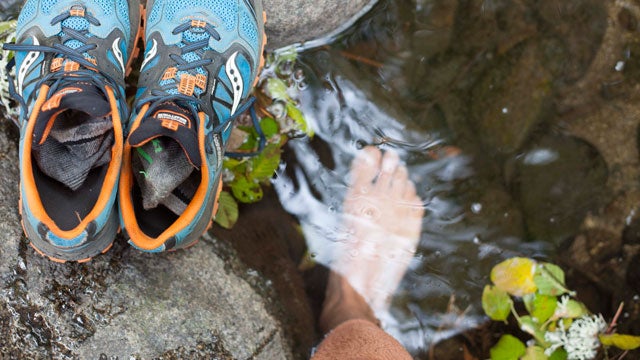“Love your legs,” my running coach shouts back over her shoulder. “Think of all the cool shit they do for you!”
I’m in Ashland, Oregon, trying to keep up with ultramarathon legend Jenn Shelton, 29, who’s agreed to train me for my first-ever 50-miler. Shelton is pacing me through the crux of Pete’s Punisher, one of the steepest runs in the state. In fact, this particular mile is so steep that no person has run it in less than 17 minutes. Jenn set the women’s record last year, reaching the top in 20 minutes, and then promptly collapsing.
Jenn has me running Pete’s Punisher because I presented her with a training conundrum: get me, a novice, ready for The North Face Endurance Challenge 50-mile race in December—a mere three and a half months away. Her regimen of grueling, but relatively short, runs are supposed to get my legs as strong as possible since my uninitiated physique simply can’t yet handle the high mileage and repetitive pounding that most training plans push.
I don’t know how to break it to Jenn, but after running Pete’s I pretty much hate my legs, and my legs hate me. My calves scream with every step. I keep wondering if I should be worrying about tearing—or at least straining—my Achilles tendons, which feel as tight as a newly strung tennis racquet. There is one thing that helps, though. At the end of the run, I plunge into a nearby sub-50 degree creek, soaking my legs. The cold is as soothing as a tonic.
In my short time trying to break into the running community, I have found everyone has an opinion about everything in the sport, and usually a damned strong one. Cold-water immersion is no exception. Despite the lack of conclusive evidence, many elite athletes still rely on ice baths as a routine part of their recovery.
Explanations vary for why cold-immersion seems to work. One of the most compelling ideas comes down to pain. Soaking shredded legs in cold water reduces the perceived delayed onset muscle soreness (DOMS) that can make training so tough, says Dr. Mike Stadnisky, a Microbiology and Immunology Ph.D. who is VP at a bio-informatics software company, and won last month’s Flagline 50K in Bend, Oregon. Less pain allows Stadnisky to run double days. “The power of belief really exists,” he says.
Perception counts, but for years athletes embraced ice baths to reduce very real inflammation—essentially the same reasons you might use rest, ice, compression, and elevation (RICE) to treat a sprained ankle. The reasoning went that by mitigating negative effects of training like inflammation, you could bounce back the next day to train at a higher level. But recently, that thinking has turned.
Sure, it feels really good to reduce post-workout pain, but Stadnisky tells me that inflammation is important to healing. And by hampering your body’s natural response to training, you limit the gains you can reap. That’s the stance taken at the U.S. Olympic Training Center, according to U.S. Olympic Committee associate director of clinical research and multi-disciplinary care, Dustin Nabhan. “We don’t want to block inflammation completely, so things like ice plunges every single day won’t help,” says Nabhan.
But cold temperatures can undoubtedly stop inflammation. And that’s not always a bad thing. Experts at the training center think cold-water immersion has its place. But timing is everything. They’re careful to apply the principles of periodization to recovery, mixing in just the right amount of anti-inflammation effects with natural recovery.
After periods of intense training, Nabhan suggests his athletes soak in a 50-degree tub for ten to 20 minutes immediately post exercise. But that’s reserved for “hell week or after a competition,” he says. While he maintains that the number of ice baths an athlete should take depends on their phase of training, Nabhan does not suggest using cold water immersion except to block extreme inflammation. In other words, let your body handle normal levels of soreness on its own.
But my coach, Jenn, wasn’t buying. She “calls bullshit” based on her personal experience, and danced with vindication in a coffee shop when I showed her evidence against the benefits of creek baths. But, I begged, can I please keep soaking my legs after getting punished on Pete’s? “Everyone should be a student of the sport,” Shelton said. “You should try everything and see what works for you. Then do it.”


